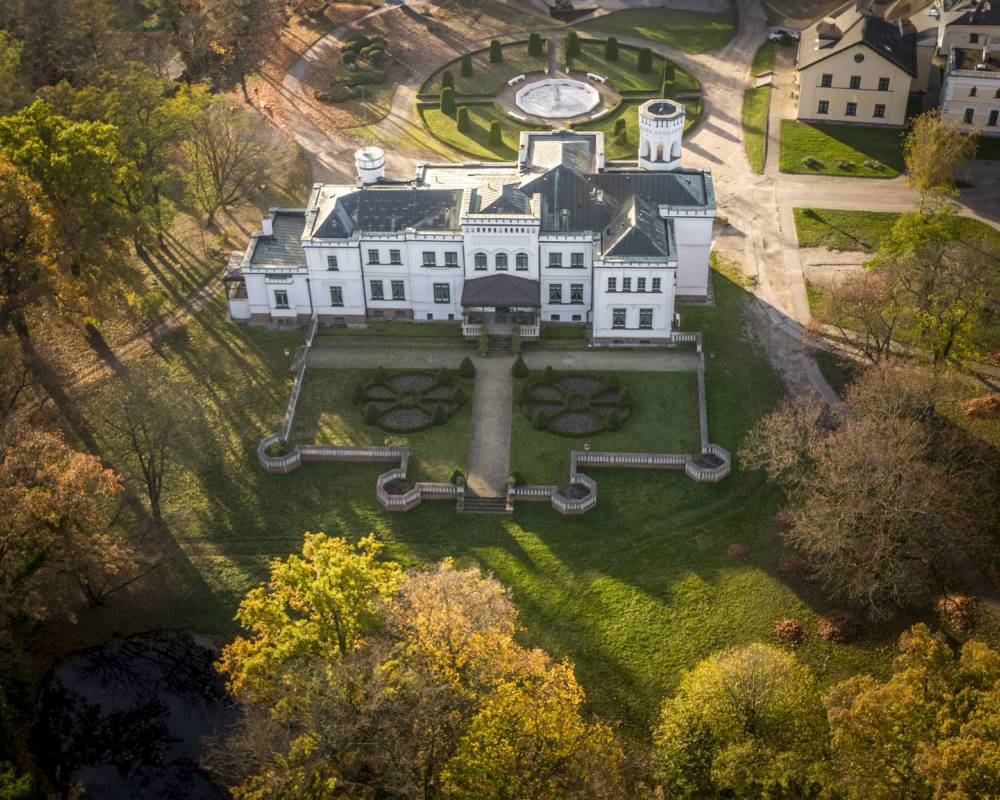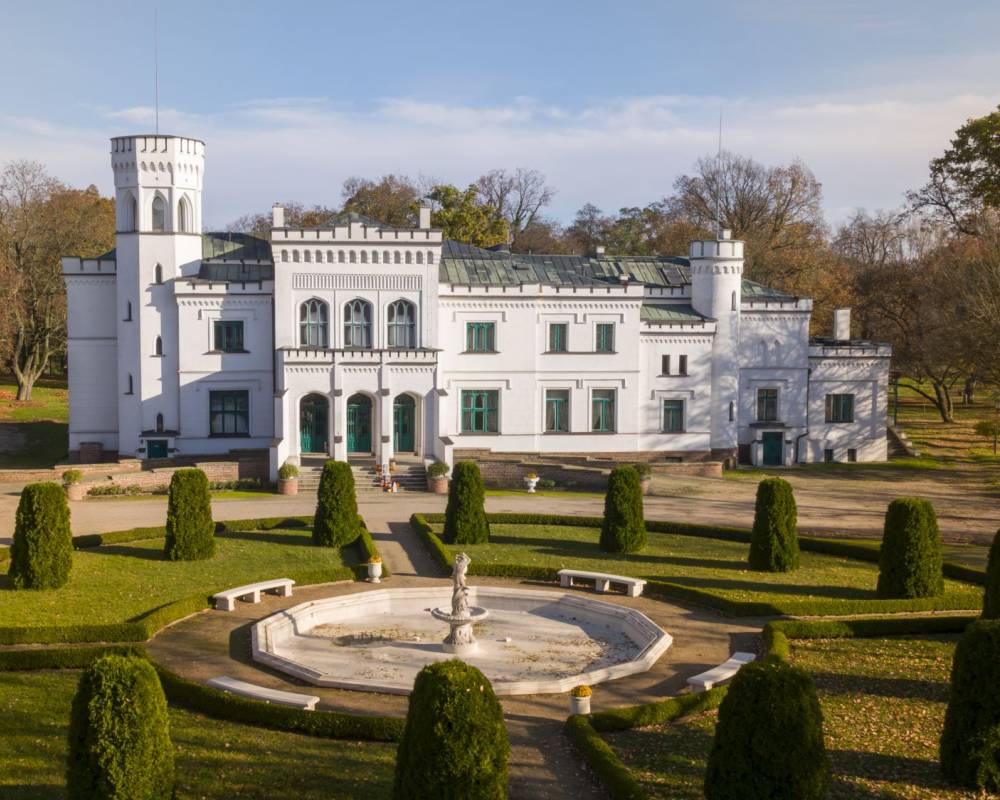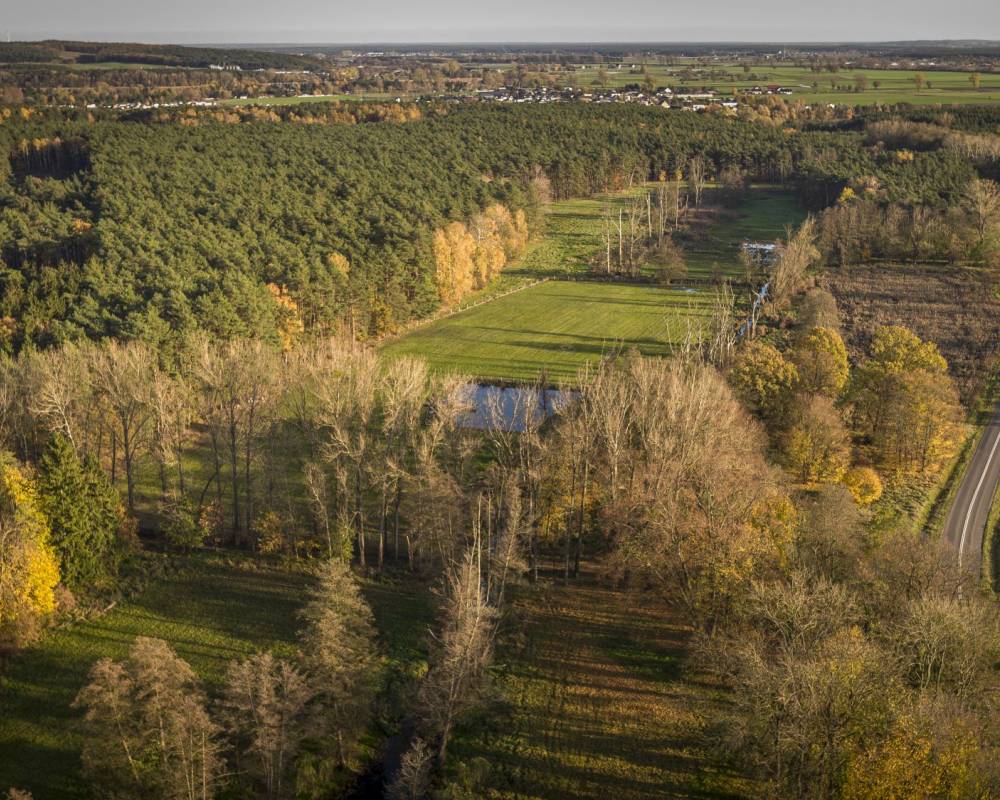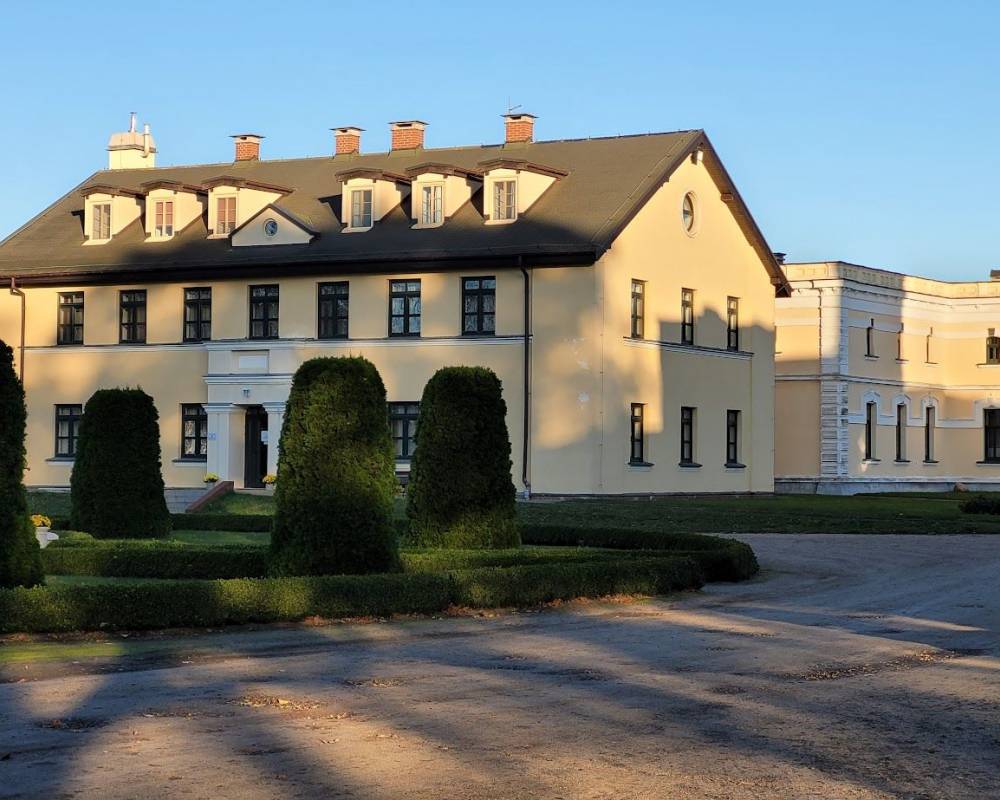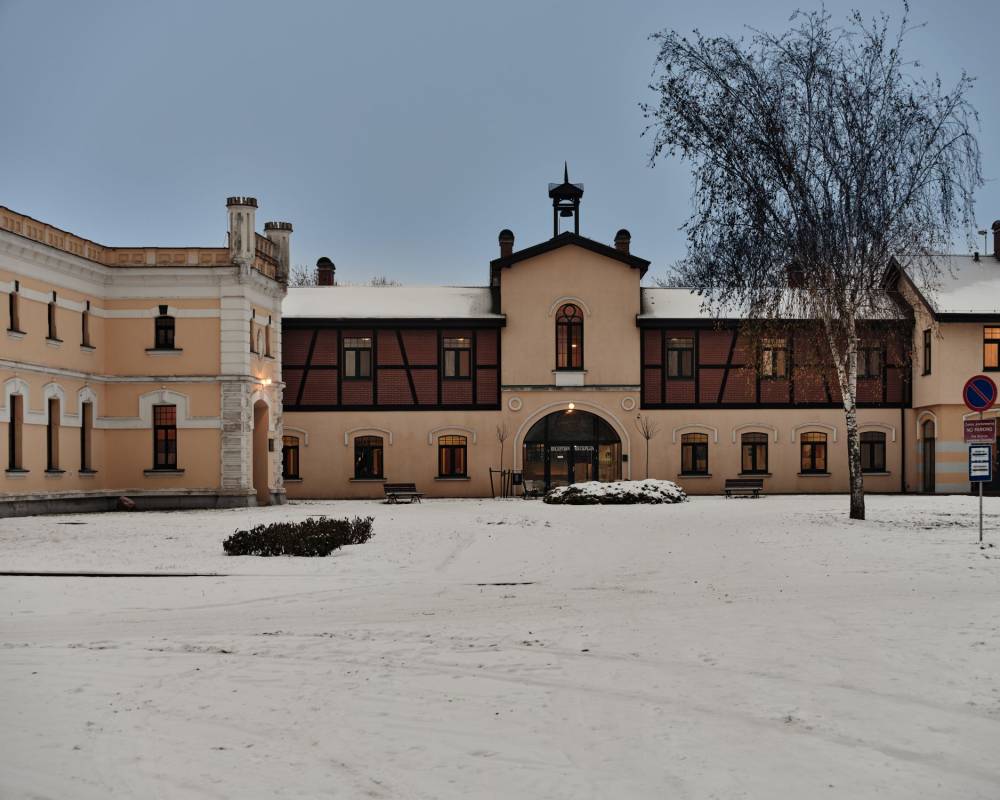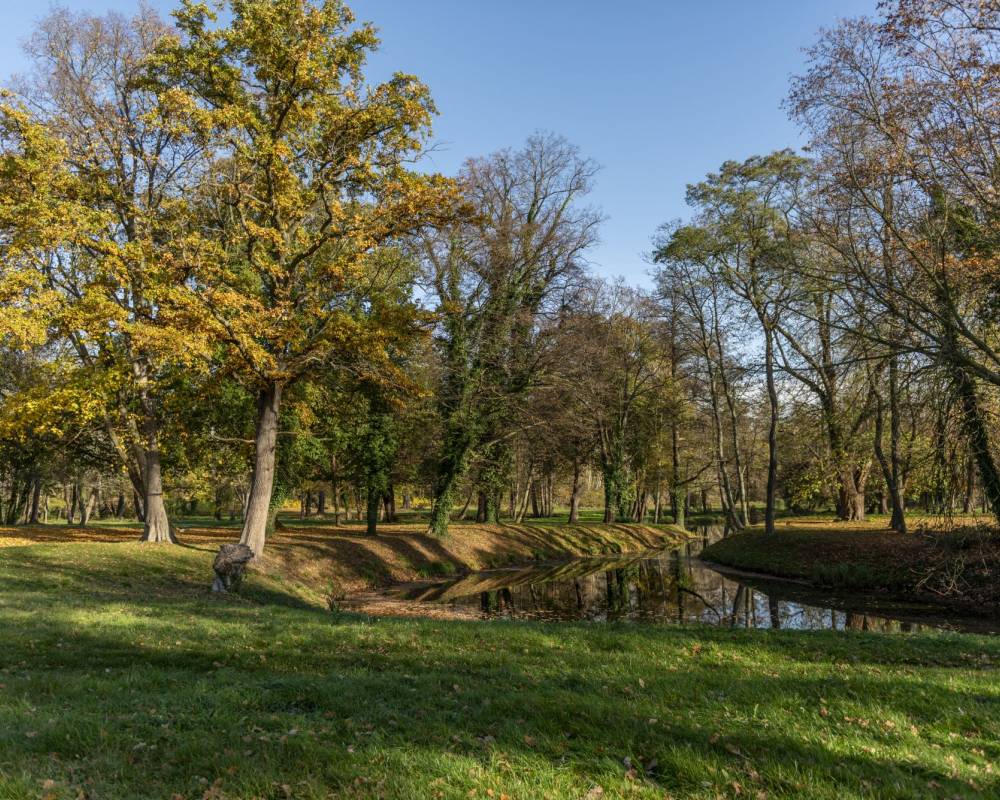Buildings
The grounds of the Resort include a historic Neo-Gothic Palace, a manor outbuilding, a gardener's house, a building with an assembly hall, a coach house and an extensive hotel building. All these buildings are in the 9-hectare park, which impresses with its variety of plants and greenery. In summer, attention is drawn to the highly decorative flowerbeds, in the midst of which there is a beautiful marble fountain - in the evening, their charm is enhanced by magnificent illumination. A highlight of the historic park is the monumental tree stand and the two ponds connected by a canal - one of them features an island with a romantic grotto.
Palace
The centre's biggest attraction is the historic chateau from 1866 in the English Neo-Gothic style. Its stylish exterior rises majestically above the manicured lawns and gravel alleys, attracting attention from the moment you enter the park beyond the gate.
The palace is a brick two-storey building with an irregular ground plan, resting on vaulted cellars. Its asymmetrical body consists of segments of different sizes, covered by low roofs hidden behind decorative crenelations.
Gardener's cottage
Just behind the entrance gate and the beautiful neo-Gothic cord garden from 1866 is the stately farm building and the adjacent Gardener's House. It now accommodates hotel rooms. There are 18 suite rooms, including 8 single rooms and 10 double rooms of 25-30 m2.
Next to the Gardener's Cottage there are two parking lots for guests.
Court outbuilding
The Manor House Outbuilding, standing along the road leading to the Palace, houses 4-person studios with kitchenettes - ideal for families with children. The studios have two rooms, a kitchenette and a bathroom. The large space (60 m2) also allows for an extra bed or crib for a child.
There is also a 150 m2 Banqueting Hall with waiter facilities in the Manor House Outbuilding. It is an ideal venue for business and private celebrations. The Banquet Hall can seat between 90 and 120 people. Its great advantages are large surface area and various arrangement possibilities, including a dance area. The hall is equipped with air-conditioning. On warm days and in summer it is possible to go out onto the green patio.
Hotel building with guest rooms
The magnificent building with the gate tower, through which the Palace was formerly entered, has been restored and serves as a hotel. At the heart of the gateway is the glass entrance to the building with its reception area. This building on the left connects to two others: The Assembly Hall and the former Coach House.
The Auditorium houses a modern, air-conditioned conference room for 150 people, while the Coach House has five double rooms with suite bathrooms and a conference room on the paternoster of the building.
An additional wing with guest rooms was added to the central historic part of the hotel building on the right. The hotel building has 52 suite rooms distributed over the ground floor, first floor and second floor with sloping ceilings. They include: 6 single rooms, 36 double rooms (including 4 rooms with a double bed), 2 triple rooms and 8 quadruple rooms. The quadruple rooms are located on the second floor. The size of the rooms ranges from 32 to 40 m2.
Park
The chateau is surrounded by an extensive historic park, transitioning into a forest park, formerly with a petting zoo. Its creator was the gardener Roter from Bydgoszcz, who shaped it using the natural relief of the land. He also introduced elements of park composition characteristic of 19th-century garden art: flower parterres on the earth terrace at the back of the palace, extensive meadows, herbaceous compositions, as well as two ponds connected by a canal. An island was raised on one of them and a romantic grotto was built on it, topped in the past with a wooden openwork gazebo. There used to be an orangery between the park and the manor house, where exotic varieties of flowers were grown. The orangery, as well as the pheasantry, have not survived to the present day.

